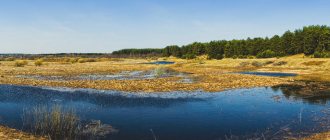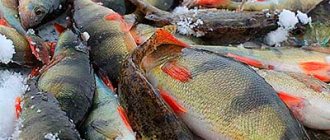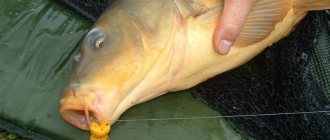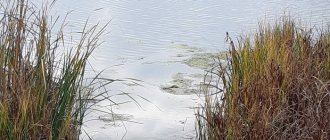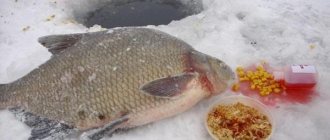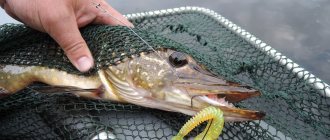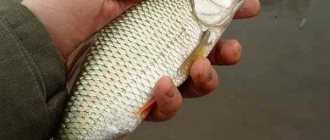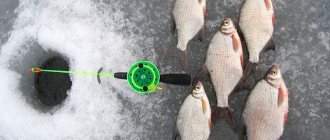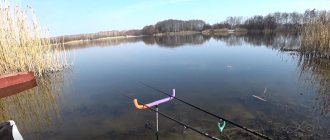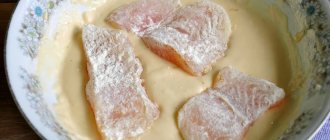How to make your own bait for cold water (autumn, winter). Natural baits in groundbait. What should not be added. What filler is used? What fraction should the bait be for cold water? What flavorings are added?
It is no secret that the success of fishing in late autumn and winter largely depends on bait, which in cold water must have certain properties. Of course, there are now countless ready-made mixtures on sale, but despite the intense advertising by respected fishing experts and the prices for these wonderful baits, they are not always actually mixtures that actually work. Often, even the inscription on the packaging indicating winter bait does not correspond to the contents, when the “winter bait” smells of fragrant biscuits and fruits.
The same story happens with fishing line, when designations and various pictures in the form of penguins and snowflakes only disguise and mislead fishermen, since the packaging often contains ordinary summer fishing line. The lies and cynical deception inherent in the trade in food and clothing also affected the sale of fishing goods. At the same time, gear and accessories for summer and winter fishing are quite expensive goods. Therefore, as before, fishermen try to make the necessary things with their own hands to the best of their ability. This also applies to bait.
Difference from summer
Before you stop preparing winter bait, you should find out what is the difference between it and traditional summer bait? And this difference exists, and not in just one parameter. First of all, it is necessary to note the fine-grained composition of winter bait, where all the ingredients are ground to a dust state. This composition of winter bait only stimulates the fish’s appetite, without saturating it. This small bait creates a noticeable food cloud in the water, attracting fish from afar, as far as visibility in the under-ice kingdom allows. Smells also serve to attract fish. And for this purpose, various low-calorie fillers are used, in particular, with copra, finely ground bran, grain husks, Belgian coconut and other components containing low-calorie substances.
For many feeder fishing enthusiasts, winter is not a hindrance. The main thing is to find open water and choose an approach to the finicky fish. And the correct choice of bait mixture will help with this. What kind of bait should be used for a winter feeder?
Today, the fishing market offers a fairly wide range of fishing baits. Some manufacturers make specialized series for winter fishing. This does not mean that in winter you need to fish only with them. The point is that you can use your favorite mixtures that you fish with in the summer. But they must differ a little from summer bait, and meet certain criteria.
It's no secret that in cold weather, fish's metabolism slows down. This is due to changes in water temperature, which affects the behavior and life activity of all types of freshwater fish.
In winter, fish move much less, which means they spend less energy, and they need much less food to restore the energy spent. Therefore, winter bait should be fine-grained. The groundbait should be almost dust-like so that once moistened, 99% of your bait mixture can easily pass through a 2mm sieve. Small particles do not saturate the fish as much. When feeding, the fish sucks in the bait, and small particles do not always enter the mouth, but mostly fly out through the gills. And she does it again. That is, he constantly stands on our bait and tries to eat it. At this moment it finds a bait, and we catch it.
Also a very important criterion for fishing in winter is the color of the bait. It is believed that the color should be natural. That is, the same as it is at the bottom. In most of our reservoirs the color of the bottom is dark: either black or brown.
If we look at winter baits from the best manufacturers, we will notice one feature: they will all be dark in color. And this is no coincidence. The bait spot should not stand out on the bottom. Very often, when large breams, really large ones, are caught in the summer, light bait mixtures are used. This is done in order to cut off small fish. Because small fish will be afraid of the unnatural color, but large fish will not be scared by it.
Since winter fishing is not so active, you can do an experiment. Take a light-colored bait mixture and divide it into two parts. Leave one in the color created by the manufacturer, paint the other black. This can be done either with the help of specialized paint for bait, or with construction soot. When fishing, use two rods clipped at the same distance. Moreover, you need to fish with light bait on one rod, and dark bait on the other. After a certain time you will understand the difference. Most likely, it will turn out that much more fish will gather on black bait, and they will respond much faster.
A very important criterion is hydration, which should be carried out in several stages, with an interval of 10–15 minutes. Mixing bait for winter sessions on a pond can be uncomfortable - you need to take cold water, pour it, stir. To avoid this, you can safely mix it at home. It is better to use drinking filtered water. Never use chlorinated tap water.
You can also mix on the shore. But, if the air temperature is below zero, there is a chance that the bait will be floating. How does this happen? Any bait composition contains a component such as heat-treated grains; in dry form they have positive buoyancy. These particles must drink a lot of water to become sinking. There are cases when fishermen mix on the street in minus weather, make a ball to see how the bait behaves in the water. And when you throw a ball, it floats up like a float, and only after a while it begins to sink. This is due precisely to the fact that heat-treated grains freeze, that is, they do not absorb moisture and become covered with ice. When you throw them, they begin to drink water, and only then drown, because the water is warmer than the air temperature. Therefore, it is better to mix it at home, let the bait sit, and drink water for 10–12 hours. In this case, all components will be maximally saturated, and it will be ready for fishing in cold water.
Experienced fishermen argue that bait for a winter feeder should be inert. That is, well hydrated and heavy. The fish is quite passive during this period. If the bait is active, loose, or some particles float up, there is a chance that the fish will stretch out in the longline and feed in the depths. Accordingly, you will be able to catch much less. Or the fish will get scared and you won’t catch anything at all. Often no more than two kilograms of dry mixture are consumed. This is quite enough for a short session of 5–6 hours. Winter fishing is less active, so there is absolutely no point in overfeeding or slowing down. It is enough to simply attract the fish, and only then try to seduce it with the bait.
Another important point is the presence of live components in our bait. Feed bloodworms are best suited. This is a natural food supply that lives in almost all bodies of water. This means that, being in the bait, it does not alarm the tidy fish at all. The protein component of bloodworm larvae is much less than that of a worm or maggot. This does not mean that you need to throw kilograms of it into the water and hope for productive fishing. For a short session of 4-5, perhaps 6 hours, 100 grams is enough, maximum 300.
As for the aromatics, it should be neutral, as gentle as possible, without various active and pronounced odors. For those who like to use aromas or liquids in the winter, there are some tips.
- It is best to add dry or liquid aromatics during the second, and ideally the last, moistening.
- The bait should first drink water, and only then begin to soak in the aromatics.
- It is better to first sift the dry mixture through a sieve. That is, we need to leave only the small fraction that we need for fishing, and only then add aromatics. There is no point in taking bait, after which up to 30% will be eliminated. Better sift everything first.
- Oil-based liquid aromatics should be excluded from winter fishing. This is due to the fact that oil disintegrates very poorly in cold water; it rises to the surface. Most likely, the fish will leave behind a trail of aroma. And the bait will remain unnoticed. Therefore, alcohol-based liquids will still be a priority.
The smell of bait
There is another important factor that influences the attractiveness of winter bait. It's the smell. If in the summer, fish from the carp family are offered mixtures with bright fruity and biscuit odors, then in the winter, such aromatic baits with a strong odor can, instead of attracting fish to a fishing spot on an autumn river or to a winter hole, on the contrary, scare them away with such aggressive odorous substances . It is better to add various syrups for cold water to the bait, which, without having any strong odors, nevertheless attract autumn fish to the fishing point. Such syrups are: “Hemp in Fish”, “Smoked Crayfish”, “Salmon”, “Red Caviar”.
Flavors with the smell of bloodworms, worms and maggots can also be effective in the cold season. Well, and, of course, introducing natural baits into the groundbait would be a good solution. It is clear that worms can only be added to bait if they are chopped into pieces, otherwise they will scatter at the bottom. Bloodworms and maggots are also not very persistent, but it makes no sense to “halve” them, otherwise these larvae will leak out.
Feeding fish in the fall - how to feed in cold water
Feeding fish is a whole science. As it turned out, in different seasons the composition of bait for the same fish has to be varied. How does autumn bait for carp, crucian carp and bream differ from summer bait mixtures?
So, what changes in the conditions on the reservoir with the onset of autumn? Which forces us to change the approach to forming the composition of bait for peaceful fish. How exactly to change the composition of bait in the fall?
Firstly, in the fall the water becomes colder. This means that the odors of flavoring agents used in bait will spread more slowly and over shorter distances.
This can be explained very simply from the standpoint of physics. The higher the temperature of the substance (in our case, the water of the reservoir), the more active the spread of odors emanating from our bait. With the onset of cold weather, flavorings gradually lose their effectiveness.
You can not use them at all or use others. It is good to use attractants with animal odors in the fall: meat, blood, fish odors.
Secondly, the water becomes much clearer in the fall. Now, in clear autumn water, you can use various tricks to make the bait visible from afar. Since smells no longer work as well, we will compensate for this with visual effects.
In the autumn bait we add a maximum of components that produce suspension, dregs: milk powder; cereals; flour; bran; breading. A column of bait suspension will be visible in clear water for many meters and will attract large fish to your hooks.
Another option to visually attract fish to bait is to add a small amount of chopped worms to the bait mixture. This is no longer 5-10%, as we added in the summer, but 20-25% of the weight of the bait. Such an abundance of wriggling worms will certainly attract fish from afar with their movement.
Thirdly, in the summer we were afraid to use excessively high-calorie bait, so as not to feed the fish.
Crucian carp and bream, carp and roach, could approach the abundant high-calorie bait, get drunk and completely ignore the bait, because... stuffed...
As a result, with the onset of autumn we can feed the fish more boldly.
The approaching cold forces the fish to feed more actively and stock up for the winter. On the contrary, abundant high-calorie bait will keep a school of carp or crucian carp near the fishing zone for a long time.
These are the features of autumn bait for fish! Keep this information in hand when you get ready to feed your fish in cold water in the fall!
Preparing bait for cold water (autumn, winter)
Of course, you can prepare winter bait yourself without such exotics as Belgian coconuts and other foreign ingredients. This component can be replaced with dry semolina and bran. And the main component of the bait can be made into pea porridge in the form of puree. You can then add slightly undercooked millet porridge, dry semolina, barley and corn grits to the pea puree.
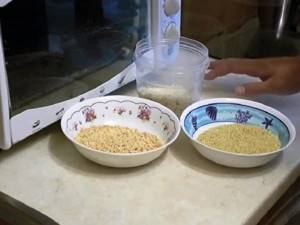
To make it more crumbly and create an attractive food cloud in the water column, you can add breadcrumbs and milk powder to the bait. The addition of fried finely ground seeds serves the same purpose. They are an active component that, when washed away, will create movement of the bait in the water column. All these ingredients will not be able to saturate the fish, but can only attract it with the smell, appearance of the food cloud and movement. This is why you need to add undercooked millet to the bait. In the water in which the porridge is to be cooked, you need to add just a little granulated sugar and salt, just a little. These components are also attractive to fish. Salt, by the way, is also found in many artificial baits made from edible rubber.
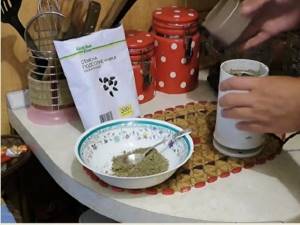
Add syrups to the finished mixture and the cold water bait is ready.
I recommend to read:
Wobbler for pike
Share with your friends!
